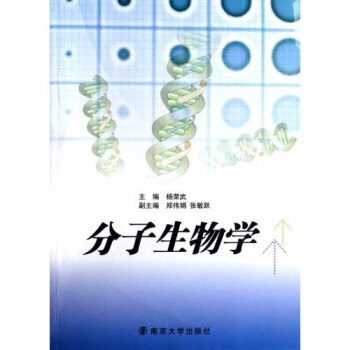

具体描述
编辑推荐
《相平衡、相图和相变——其热力学基础(第二版)》是影印版英文专著,原书由剑桥大学出版社于2008年出版。相平衡、相变等热力学原理是理解、设计材料属性的基础。计算工具的出现使材料学家能够处理越来越复杂的情况,但对于热力学基础理论的理解也越来越重要。本书图文并茂,深入浅出地讲解了热力学原理以及在计算机计算中的应用,对于材料科学、材料工程方面的研究者会有很大帮助。内容简介
《相平衡、相图和相变——其热力学基础(第二版)(英文影印版)》主要内容为现代计算机应用观点下的热力学基本原理。 化学平衡和化学变化的理论基础也是本书的内容之一,其重点在于相图的性质。本书从基本原理出发,讨论延及多相的系统。第二版新增加的内容包括不可逆热力学、极值原理和表面、界面热力学等等。 平衡条件的理论刻画、系统的平衡状态和达到平衡时的变化都以图解的形式给出。《相平衡、相图和相变——其热力学基础(第二版)(英文影印版)》适合材料科学与工程领域的研究人员、研究生和高年级本科生阅读。
作者简介
(瑞典)希勒特(M. Hillert),瑞典皇家工学院教授。目录
Preface to second edition page xiiPreface to first edition xiii
1 Basic concepts of thermodynamics 1
1.1 External state variables 1
1.2 Internal state variables 3
1.3 The first law of thermodynamics 5
1.4 Freezing-in conditions 9
1.5 Reversible and irreversible processes 10
1.6 Second law of thermodynamics 13
1.7 Condition of internal equilibrium 17
1.8 Driving force 19
1.9 Combined first and second law 21
1.10 General conditions of equilibrium 23
1.11 Characteristic state functions 24
1.12 Entropy 26
2 Manipulation of thermodynamic quantities 30
2.1 Evaluation of one characteristic state function from another 30
2.2 Internal variables at equilibrium 31
2.3 Equations of state 33
2.4 Experimental conditions 34
2.5 Notation for partial derivatives 37
2.6 Use of various derivatives 38
2.7 Comparison between CV and CP 40
2.8 Change of independent variables 41
2.9 Maxwell relations 43
3 Systems with variable composition 45
3.1 Chemical potential 45
3.2 Molar and integral quantities 46
3.3 More about characteristic state functions 48
3.4 Additivity of extensive quantities. Free energy and exergy 51
3.5 Various forms of the combined law 52
3.6 Calculation of equilibrium 54
3.7 Evaluation of the driving force 56
3.8 Driving force for molecular reactions 58
3.9 Evaluation of integrated driving force as function of
T or P 59
3.10 Effective driving force 60
4 Practical handling of multicomponent systems 63
4.1 Partial quantities 63
4.2 Relations for partial quantities 65
4.3 Alternative variables for composition 67
4.4 The lever rule 70
4.5 The tie-line rule 71
4.6 Different sets of components 74
4.7 Constitution and constituents 75
4.8 Chemical potentials in a phase with sublattices 77
5 Thermodynamics of processes 80
5.1 Thermodynamic treatment of kinetics of
internal processes 80
5.2 Transformation of the set of processes 83
5.3 Alternative methods of transformation 85
5.4 Basic thermodynamic considerations for processes 89
5.5 Homogeneous chemical reactions 92
5.6 Transport processes in discontinuous systems 95
5.7 Transport processes in continuous systems 98
5.8 Substitutional diffusion 101
5.9 Onsager’s extremum principle 104
6 Stability 108
6.1 Introduction 108
6.2 Some necessary conditions of stability 110
6.3 Sufficient conditions of stability 113
6.4 Summary of stability conditions 115
6.5 Limit of stability 116
6.6 Limit of stability against fluctuations in composition 117
6.7 Chemical capacitance 120
6.8 Limit of stability against fluctuations of
internal variables 121
6.9 Le Chatelier’s principle 123
7 Applications of molar Gibbs energy diagrams 126
7.1 Molar Gibbs energy diagrams for binary systems 126
7.2 Instability of binary solutions 131
7.3 Illustration of the Gibbs–Duhem relation 132
7.4 Two-phase equilibria in binary systems 135
7.5 Allotropic phase boundaries 137
7.6 Effect of a pressure difference on a two-phase
equilibrium 138
7.7 Driving force for the formation of a new phase 142
7.8 Partitionless transformation under local equilibrium 144
7.9 Activation energy for a fluctuation 147
7.10 Ternary systems 149
7.11 Solubility product 151
8 Phase equilibria and potential phase diagrams 155
8.1 Gibbs’ phase rule 155
8.2 Fundamental property diagram 157
8.3 Topology of potential phase diagrams 162
8.4 Potential phase diagrams in binary and multinary systems 166
8.5 Sections of potential phase diagrams 168
8.6 Binary systems 170
8.7 Ternary systems 173
8.8 Direction of phase fields in potential phase diagrams 177
8.9 Extremum in temperature and pressure 181
9 Molar phase diagrams 185
9.1 Molar axes 185
9.2 Sets of conjugate pairs containing molar variables 189
9.3 Phase boundaries 193
9.4 Sections of molar phase diagrams 195
9.5 Schreinemakers’ rule 197
9.6 Topology of sectioned molar diagrams 201
10 Projected and mixed phase diagrams 205
10.1 Schreinemakers’ projection of potential phase diagrams 205
10.2 The phase field rule and projected diagrams 208
10.3 Relation between molar diagrams and Schreinemakers’
projected diagrams 212
10.4 Coincidence of projected surfaces 215
10.5 Projection of higher-order invariant equilibria 217
10.6 The phase field rule and mixed diagrams 220
10.7 Selection of axes in mixed diagrams 223
10.8 Konovalov’s rule 226
10.9 General rule for singular equilibria 229
11 Direction of phase boundaries 233
11.1 Use of distribution coefficient 233
11.2 Calculation of allotropic phase boundaries 235
11.3 Variation of a chemical potential in a two-phase field 238
11.4 Direction of phase boundaries 240
11.5 Congruent melting points 244
11.6 Vertical phase boundaries 248
11.7 Slope of phase boundaries in isothermal sections 249
11.8 The effect of a pressure difference between two phases 251
12 Sharp and gradual phase transformations 253
12.1 Experimental conditions 253
12.2 Characterization of phase transformations 255
12.3 Microstructural character 259
12.4 Phase transformations in alloys 261
12.5 Classification of sharp phase transformations 262
12.6 Applications of Schreinemakers’ projection 266
12.7 Scheil’s reaction diagram 270
12.8 Gradual phase transformations at fixed composition 272
12.9 Phase transformations controlled by a chemical potential 275
13 Transformations in closed systems 279
13.1 The phase field rule at constant composition 279
13.2 Reaction coefficients in sharp transformations
for p = c + 1 280
13.3 Graphical evaluation of reaction coefficients 283
13.4 Reaction coefficients in gradual transformations
for p = c 285
13.5 Driving force for sharp phase transformations 287
13.6 Driving force under constant chemical potential 291
13.7 Reaction coefficients at constant chemical potential 294
13.8 Compositional degeneracies for p = c 295
13.9 Effect of two compositional degeneracies for p = c . 1 299
14 Partitionless transformations 302
14.1 Deviation from local equilibrium 302
14.2 Adiabatic phase transformation 303
14.3 Quasi-adiabatic phase transformation 305
14.4 Partitionless transformations in binary system 308
14.5 Partial chemical equilibrium 311
14.6 Transformations in steel under quasi-paraequilibrium 315
14.7 Transformations in steel under partitioning of alloying elements 319
15 Limit of stability and critical phenomena 322
15.1 Transformations and transitions 322
15.2 Order–disorder transitions 325
15.3 Miscibility gaps 330
15.4 Spinodal decomposition 334
15.5 Tri-critical points 338
16 Interfaces 344
16.1 Surface energy and surface stress 344
16.2 Phase equilibrium at curved interfaces 345
16.3 Phase equilibrium at fluid/fluid interfaces 346
16.4 Size stability for spherical inclusions 350
16.5 Nucleation 351
16.6 Phase equilibrium at crystal/fluid interface 353
16.7 Equilibrium at curved interfaces with regard to composition 356
16.8 Equilibrium for crystalline inclusions with regard to composition 359
16.9 Surface segregation 361
16.10 Coherency within a phase 363
16.11 Coherency between two phases 366
16.12 Solute drag 371
17 Kinetics of transport processes 377
17.1 Thermal activation 377
17.2 Diffusion coefficients 381
17.3 Stationary states for transport processes 384
17.4 Local volume change 388
17.5 Composition of material crossing an interface 390
17.6 Mechanisms of interface migration 391
17.7 Balance of forces and dissipation 396
18 Methods of modelling 400
18.1 General principles 400
18.2 Choice of characteristic state function 401
18.3 Reference states 402
18.4 Representation of Gibbs energy of formation 405
18.5 Use of power series in T 407
18.6 Representation of pressure dependence 408
18.7 Application of physical models 410
18.8 Ideal gas 411
18.9 Real gases 412
18.10 Mixtures of gas species 415
18.11 Black-body radiation 417
18.12 Electron gas 418
19 Modelling of disorder 420
19.1 Introduction 420
19.2 Thermal vacancies in a crystal 420
19.3 Topological disorder 423
19.4 Heat capacity due to thermal vibrations 425
19.5 Magnetic contribution to thermodynamic properties 429
19.6 A simple physical model for the magnetic contribution 431
19.7 Random mixture of atoms 434
19.8 Restricted random mixture 436
19.9 Crystals with stoichiometric vacancies 437
19.10 Interstitial solutions 439
20 Mathematical modelling of solution phases 441
20.1 Ideal solution 441
20.2 Mixing quantities 443
20.3 Excess quantities 444
20.4 Empirical approach to substitutional solutions 445
20.5 Real solutions 448
20.6 Applications of the Gibbs–Duhem relation 452
20.7 Dilute solution approximations 454
20.8 Predictions for solutions in higher-order systems 456
20.9 Numerical methods of predictions for higher-order systems 458
21 Solution phases with sublattices 460
21.1 Sublattice solution phases 460
21.2 Interstitial solutions 462
21.3 Reciprocal solution phases 464
21.4 Combination of interstitial and substitutional solution 468
21.5 Phases with variable order 469
21.6 Ionic solid solutions 472
22 Physical solution models 476
22.1 Concept of nearest-neighbour bond energies 476
22.2 Random mixing model for a substitutional solution 478
22.3 Deviation from random distribution 479
22.4 Short-range order 482
22.5 Long-range order 484
22.6 Long- and short-range order 486
22.7 The compound energy formalism with short-range order 488
22.8 Interstitial ordering 490
22.9 Composition dependence of physical effects 493
References 496
Index 499
前言/序言
用户评价
这本书给我的初步印象是,它在理论阐述上做得相当扎实,能够帮助读者建立起对相平衡和相变过程的深刻理解。作为一名对材料科学领域充满好奇的业余爱好者,我一直在寻找能够系统性地梳理这些复杂概念的读物,而这本书恰好满足了我的需求。我非常欣赏书中对热力学基础知识的深入讲解,这为理解后续的相平衡和相图内容奠定了坚实的基础。例如,书中对熵、焓、吉布斯自由能等基本概念的阐述,以及它们如何影响相的稳定性,都写得非常透彻。在相图部分,作者通过一系列精心设计的图例,展示了不同组分和温度下的相行为,这对于可视化理解抽象的热力学过程至关重要。我特别关注了书中关于相变动力学的讨论,它不仅仅停留在平衡态的描述,而是触及了相变过程中物质的演变机理,这对于理解材料的性能是如何形成的非常有启发性。总的来说,这本书在理论深度和逻辑严谨性方面都给我留下了深刻的印象,它能够帮助读者真正掌握相平衡和相变的内在规律。
评分这本书给我最大的感受是它在理论深度和实际应用之间的平衡做得相当出色。作为一名研究生,我需要在科研中运用相平衡的知识来指导实验和分析结果,而这本书恰恰满足了我的需求。它不仅仅是罗列公式,而是通过层层递进的方式,将热力学原理与实际的相图构建和解读过程有机地结合起来。我尤其欣赏书中对不同热力学模型(如理想溶液模型、非理想溶液模型等)的详细推导和应用分析,这使得我对理解各种材料体系的相行为有了更深刻的认识。书中对相变的分类和描述也十分详尽,从固相-固相转变到液-固转变,再到更复杂的相变,都进行了深入的探讨,并配以大量的实例。我特别关注了书中关于二元和三元相图的章节,作者通过清晰的图示和详尽的文字解释,让我能够快速掌握解读这些复杂图谱的方法。更重要的是,书中还探讨了相图的构建方法,这对于我进行实验设计和数据分析至关重要。对于那些希望深入理解材料世界背后原理的读者来说,这本书无疑是一份宝贵的资源,它能够帮助你构建起坚实的理论基础,并将其转化为解决实际问题的能力。
评分我最近购入了一本名为《相平衡、相图和相变:其热力学基础(第二版)(英文影印版)》的书,虽然我还没有完全深入研读,但初步翻阅和试读了一些章节后,我必须说,这本书在一些关键领域确实展现出了令人印象深刻的深度和广度。作为一名对材料科学抱有浓厚兴趣的学生,我一直渴望找到一本能够清晰阐述相平衡原理,并能将之与实际应用紧密联系起来的教材。这本书的排版设计,尽管是影印版,但文字清晰,图表直观,这对于理解抽象的热力学概念至关重要。例如,在介绍相图的绘制和解读时,书中提供了大量来自不同系统的实例,从简单的二元合金到更复杂的多元体系,每一种都配有详细的解释,说明了图中的各种区域、线段以及它们所代表的物理意义。这不仅仅是数据的堆砌,更是对背后热力学驱动力的深刻剖析。作者在讲解相变动力学时,也没有停留在理论层面,而是引入了诸如形核、生长等概念,并通过数学模型和实验数据相结合的方式,让读者能够直观地理解材料在不同温度和压力下结构演变的过程。这一点尤其让我感到兴奋,因为这为我理解许多实际材料处理过程提供了理论框架。此外,书中对各种相变类型的分类和比较也做得十分细致,无论是固态相变、液固相变还是气液相变,都能找到相应的理论解释和应用案例。
评分我最近入手了这本《相平衡、相图和相变:其热力学基础(第二版)(英文影印版)》,初步阅读后,我对其在概念讲解上的细致和应用导向性印象深刻。作为一名对材料科学有一定研究基础的学生,我一直在寻找一本能够将理论与实践有效结合的书籍,而这本书在这一点上做得相当不错。书中对相平衡概念的阐述,不仅仅是停留在理论公式层面,而是通过大量实例,例如合金体系、陶瓷体系等,来展示相平衡在实际材料设计中的应用。这使得我能够更直观地理解相图所传达的信息,以及如何利用相图来预测和控制材料的性能。此外,书中对相变的分类和机理的讨论也十分深入,从固态相变到液固相变,作者都进行了详细的剖析,并结合了相应的热力学模型和实验证据。我尤其欣赏书中对相变动力学的介绍,这为我理解材料在不同条件下结构演变提供了理论依据。这本书的排版虽然是影印版,但内容清晰,图表丰富,使得阅读体验相当不错,能够帮助我更有效地掌握相平衡和相变的相关知识。
评分对于我这样一名正在学习材料科学的学生来说,这本书是一本不可多得的参考书。它的内容涵盖了相平衡、相图和相变等核心概念,并深入探讨了其背后的热力学原理。我尤其喜欢书中对相图的讲解,作者用非常清晰的图表和详细的解释,将复杂的相图变得易于理解。从简单的二元相图到复杂的多元相图,书中都提供了丰富的例子,让我能够通过实际案例来学习理论知识。更让我惊喜的是,书中还探讨了如何通过实验数据来构建和验证相图,这对于我们这些将来需要做实验的人来说非常实用。此外,关于相变的章节也写得非常精彩,作者不仅介绍了各种相变的类型,还深入分析了相变的驱动力以及相变过程中可能出现的现象。我特别注意到书中对固态相变的研究,这对于理解合金的组织和性能变化至关重要。这本书的语言虽然是英文,但其清晰的逻辑和直观的图解,使得阅读起来并不感到吃力。总而言之,这是一本能够帮助我打下坚实基础,并在日后的学习和研究中受益匪浅的书籍。
评分专业书籍,包装一般
评分经典入手,哈哈,太开心了
评分比较专业,建议初学者不要看这个
评分应该是经典 讲解较为透彻
评分可以可以可以可以可以可以可以可以可以可以可以可以可以可以可以可以可以可以
评分书质量不错,内容也比较全,不错的专业书
评分东西很好,还会继续购买
评分质量不错,还在学习中,挺好的
评分╮ (. ? ? ?.) ╭
相关图书
本站所有内容均为互联网搜索引擎提供的公开搜索信息,本站不存储任何数据与内容,任何内容与数据均与本站无关,如有需要请联系相关搜索引擎包括但不限于百度,google,bing,sogou 等
© 2025 book.coffeedeals.club All Rights Reserved. 静流书站 版权所有

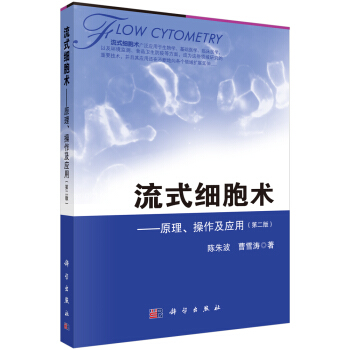


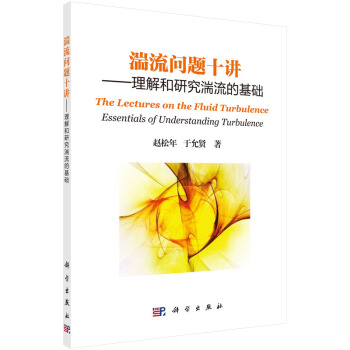
![当代地理学要义:概念、思维与方法 [Key Concepts in Geography] pdf epub mobi 电子书 下载](https://pic.windowsfront.com/10053777/4c227cf4-fef1-473a-b45f-f057edac26b1.jpg)
![经典英文数学教材系列:概率和鞅 [Probability with Martingales] pdf epub mobi 电子书 下载](https://pic.windowsfront.com/10096490/22a48edf-f1b9-4c74-a0b0-042964c27b6e.jpg)



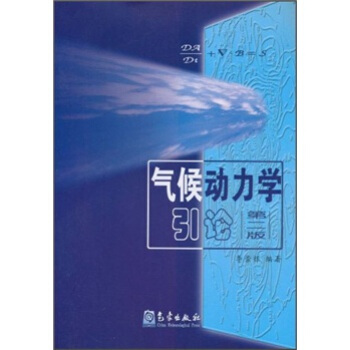
![AP微积分 [AP Calculus] pdf epub mobi 电子书 下载](https://pic.windowsfront.com/10972294/942ccbdd-bbfc-4ac1-90bf-6dcbfd7a87ea.jpg)
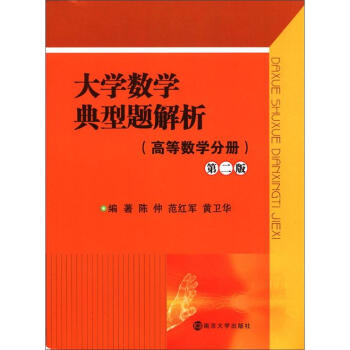
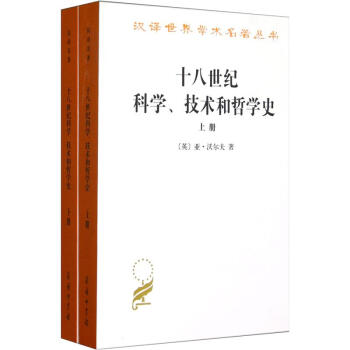
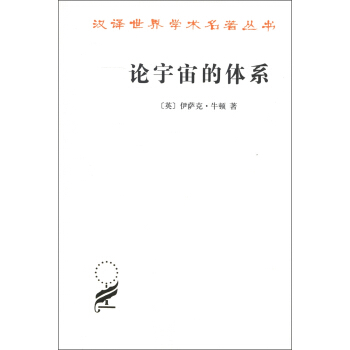
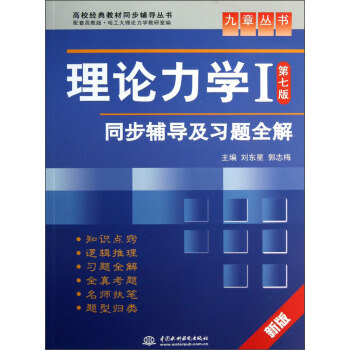
![变分法和最优控制论 [Calculus of Variations and Optimal Control Theory:a Concise Introduction] pdf epub mobi 电子书 下载](https://pic.windowsfront.com/11316303/rBEhVFI4U_oIAAAAAAG392k6cxYAADQsAOLzBsAAbgP720.jpg)

![数据分析与模拟丛书·空间分析:生态学家指南 [Spatial Analysis:A Guide for Ecologists] pdf epub mobi 电子书 下载](https://pic.windowsfront.com/11554195/5642d948N85049a48.jpg)

